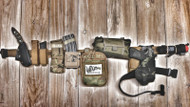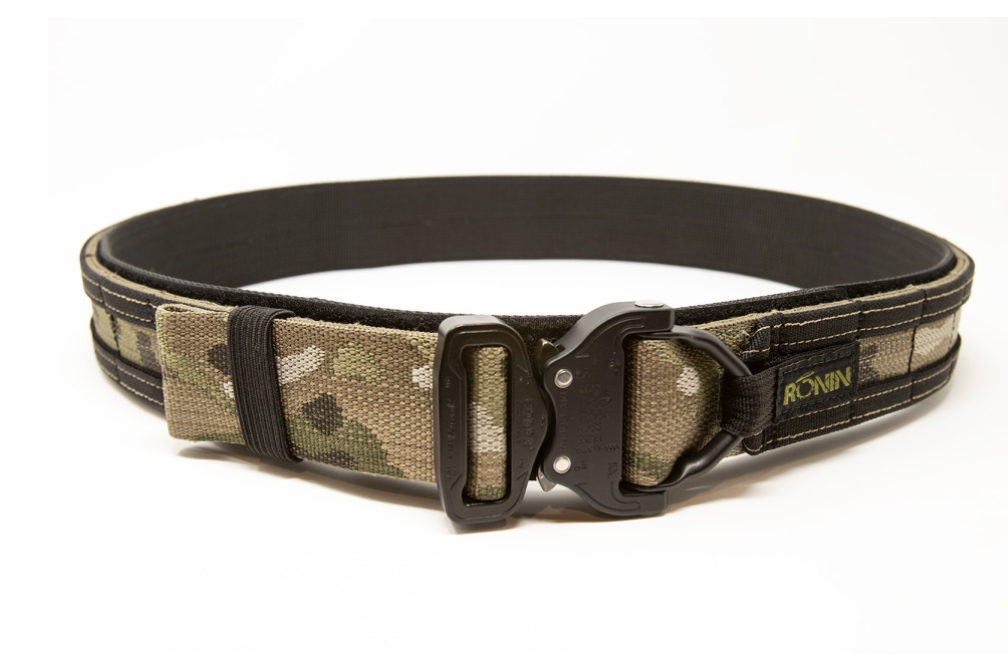Battle Belt Set-up: A Beginners Guide
Posted by Midas on Jan 1st 2023
Throughout history, we have been witness to quite the array of weapons and gear. Due to the wild progression in technology and manufacturing methods, military equipment from the cannon to the musket have stepped into the modern era in the form of rifles and artillery. The battle belt is no different. Initially developed to effectively secure a sword to one’s hip, the belt was adopted by more modern militaries in the mid 1800s to early 1900s to hold water canteens, pistols, hand to hand weapons and ammunition. Interestingly enough, the battle belt stayed in that capacity well into the 2000s.
Then, as conflict frequently functions, the Global War on Terror (GWOT) served as a catalyst of evolution for this piece of gear. Due to the enhanced role played by Special Operations Forces (SOF) in the various conflicts spanning the globe from the Philippines to Afghanistan, a new need emerged for the battle belt. Rather than large forces meeting on trench lined battlefields, small groups of individuals tasked with conducting high speed raids aimed at capturing or killing enemy leaders and facilitators drove new requirements. The spearpoint of the American military entered the age of the assaulter, where troops had to be able to carry lots of functionality while operating at a weight low enough to get in and out of an objective quickly. This coupled with advances in medical aid equipment, entry methods, and transportation requirements produced a natural marriage of function and fit that we now know as the battle belt.
Purpose
The modern day battle belt allows an individual to carry a large number of combinations of gear tailored to the mission at hand, whether its additional rifle mags, flash-bangs for entry, glow sticks for marking cleared buildings and rooms, life saving medical supplies, or a safety lead for hooking into the helicopter bringing them in. This is largely accomplished due to the modularity of the MOLLE weave that they share.
The battle belt presented some ergonomic benefits as well. The ability to distribute the weight of this gear onto the hips and remove some of the bulk from plate carriers is a huge advantage due to limiting the profile of the individual, and removing some of that pressure from the lower back and trapezius muscles up near the shoulders. Battle belts are so prolific on the modern battlefield that a well trained individual can typically look at another’s belt and gain a good understanding of their mission set.
My Background and My Belt’s General Purpose
My belt is a prime example of being setup for a specific purpose and mission. But a battle belt still has a general purpose as well. Over the years my belt has changed, constantly evolving to the needs of myself and those around me. And your belt can change (and should change) too. Let me explain.
Despite these modifications, my belt alongside most others, has contained some basic, consistent elements. A battle belt should be a direct contributor to making holes as well as patching them up. If you just thought, “well that just means it's an extension of my plate carrier”, then you would be spot on.
Once upon a time, in a far away land, I was tasked with training and advising Afghan commandos. While some of that advising was mission based, the majority of it took place over seemingly benign daily interactions. After all, you don’t forge relationships with the guy to your left and right by only showing up on game day. Taking that fact into account as well as the large amount of green on blue (insider attacks on coalition forces by Afghan service members), my belt served as my first line of protection. While personal safety was always a concern, the mission came first and I couldn’t feasibly form a lasting bond with our partner force by kitting up every time I interacted with them. It also didn’t help our trust issues by surrounding myself with fully kitted GAs (guardian angels) tasked with securing my well being. All of those measures, while warranted, would not have portrayed the trust necessary to build lasting bonds.
Therefore, I found myself frequently sitting in a room or out walking about outnumbered by Afghans 10 to 1 (on a good day), with nothing but my battle belt. Sound crazy? Maybe it was. But my belt was there for more than just a peace of mind. My belt was life for me, and, hopefully, death to any threat who decided to change teams at my expense.
My Setup
1. Ronin Senshi Belt - $190
Now that you have a good feel for the backstory, let’s get into the nitty gritty. My belt was, and still is, a Ronin Senshi belt. Tu Lam’s company makes some of the best belts out there. Sure it's expensive, but so is your life. Like my dad used to say in reference to riding motorcycles; “If you have a 10 dollar head, wear a 10 dollar helmet.”
The Ronin belt system is pretty neat in that it is reliant on a velcro linkage between the inner belt, which feeds through the normal belt loops on your pants, and the outer belt. The outer belt contains the MOLLE weave that is used to mount accessories as well as the cobra style belt buckle that secures the belt to your hips. It’s tough. Real tough. And the inner belt even has a hidden compartment for handcuff keys in case you find yourself being taken into custody by corrupt police in some third world country that has subpar prison food.
2a. G-Code Drop Pistol Platform - $37.50
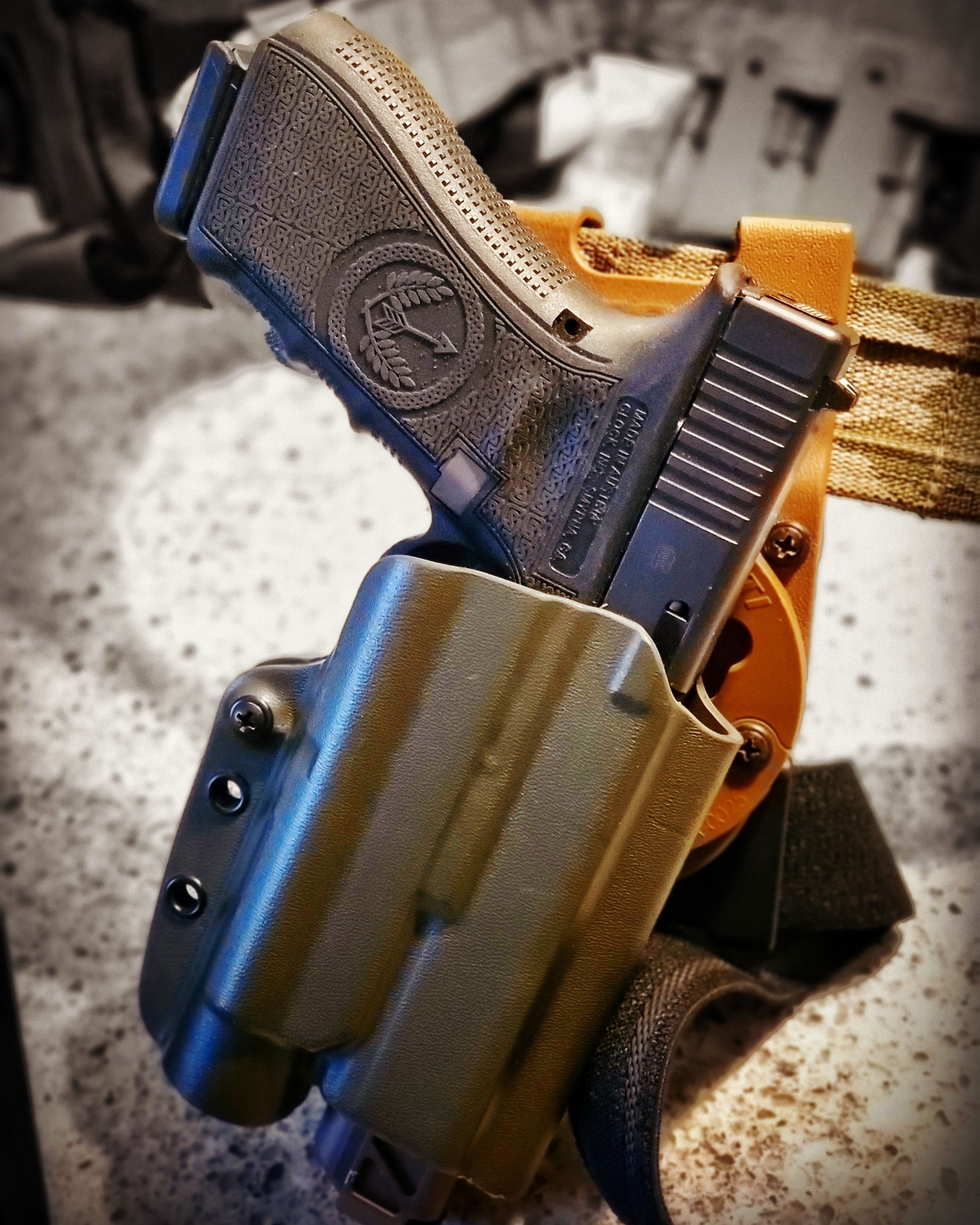
On my right hip sits a Glock19 secured with a G-Code 2” Drop Holster utilizing GCode’s RTI modular mounting system. Now, we can talk pistols another time, but I want to focus on the holster system for the purpose of this blog. Holsters will be specific to your pistol make and model. This specific system, however, is one I highly recommend. It’s a sweet mounting setup, since you can swap between holsters on the same belt to account for guns with lights, levels of retention, etc. (all depending on your mission). I recommend using some thread-locker on their hardware.
2b. Sarfariland QLS Kit - $34-$49
Another holster setup I recommend is the Safariland Quick Locking System mount family since that provides the same modularity as the G-Code setup.
3a. HSGI Bleeder Pouch - $46
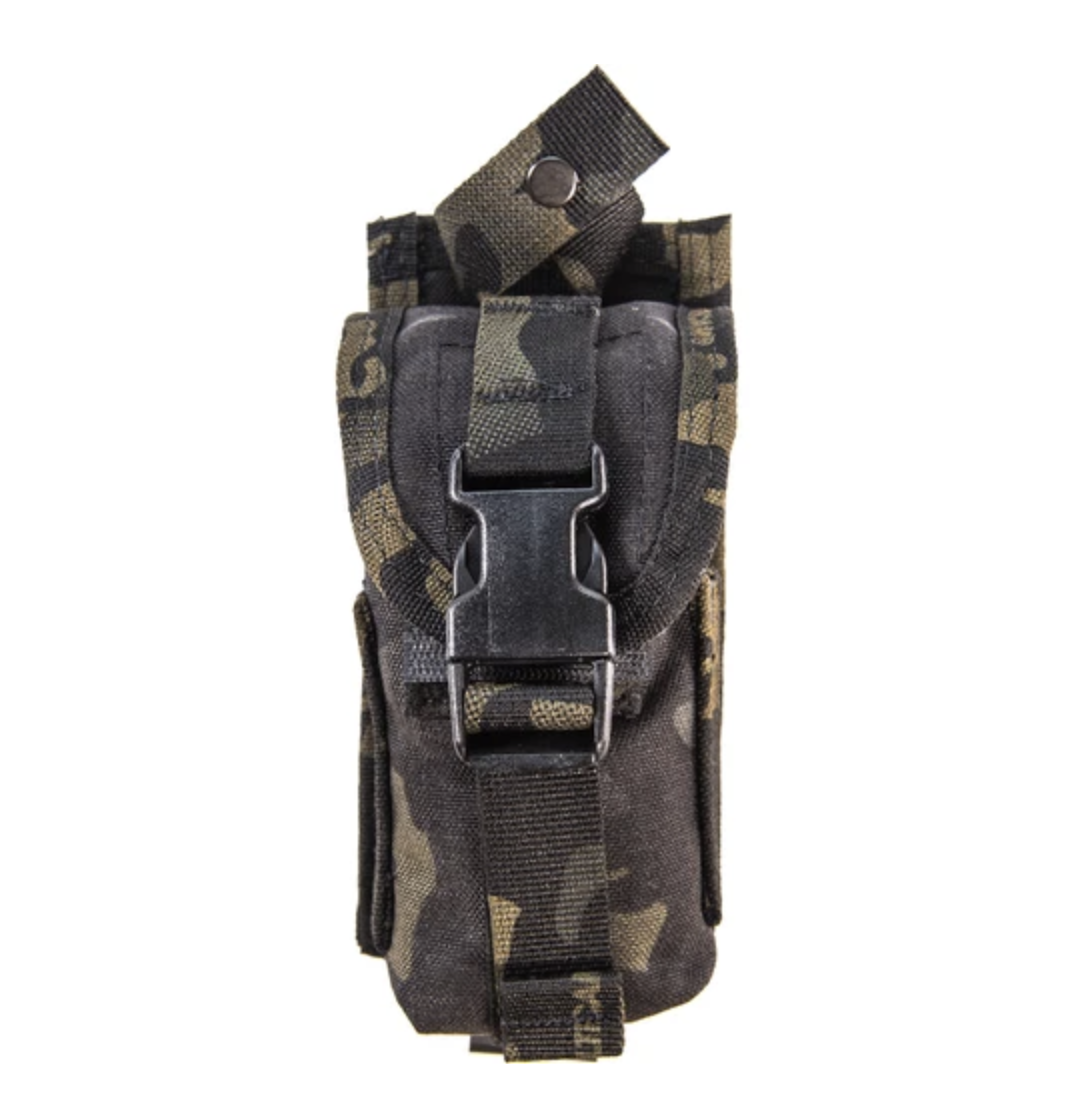
3b. HSGI Reflex IFAK System - $110
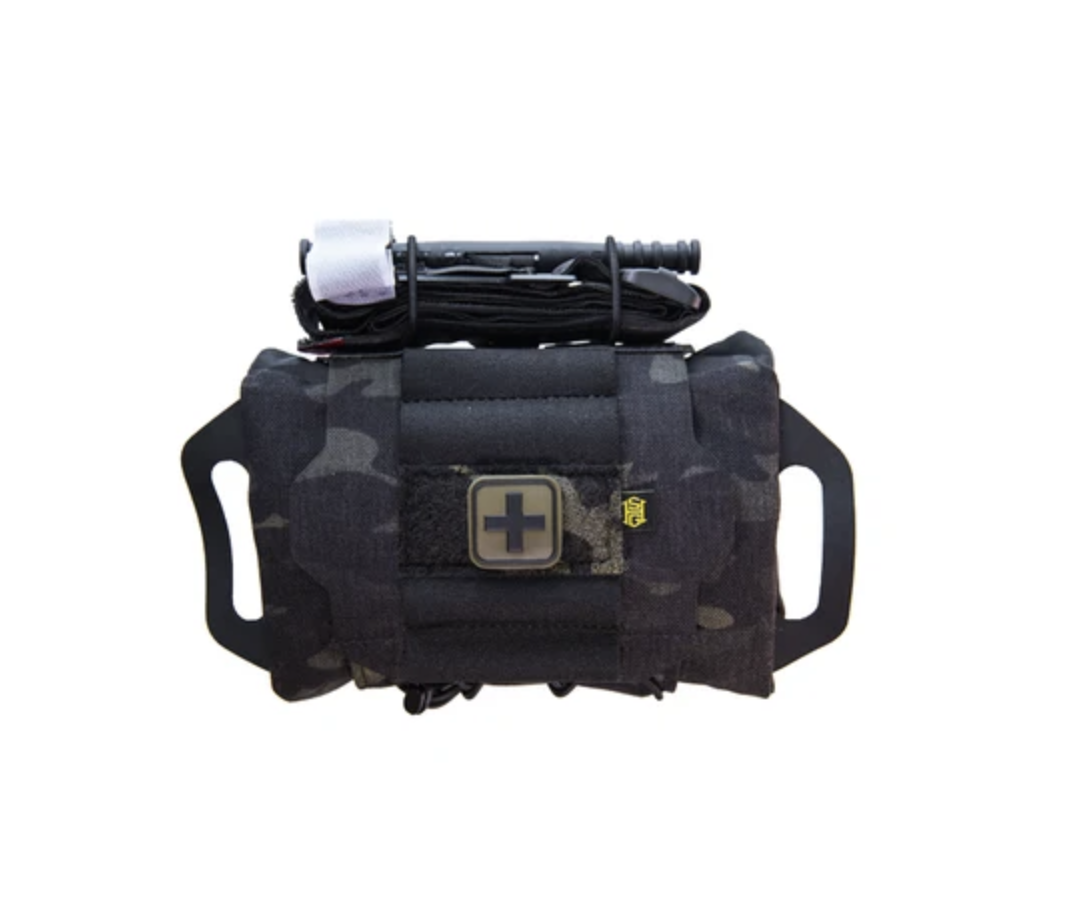
Moving around the right side at the 5 o'clock position sits a High Speed Gear Inc (HSGI) Bleeder Pouch. HSGI makes some really nice medical and magazine pouches. That’s why, next to my Bleeder Pouch at the 6 o’clock position, sits their M3T medical first aid kit taco. They don’t offer this exact first aid kit on their site anymore, but the Reflex IFAK System is a great option.
I reserved the Bleeder Pouch for use on my Afghan associates, and the M3T was for me. The M3T (and Reflex IFAK) is basically an Individual First Aid Kit (IFAK). It is accessible by both sides, which was a huge selling point for me, and contains a nifty ribbon based system for accessing tourniquets from both sides as well. Taking a Tactical Combat Casualty Care (TCCC) class and pairing that knowledge with good medical equipment make this IFAK incredibly important and useful.
Now, not everyone needs two medical pouches. We’ve established that our battle belt setups should be designed for a specific mission. I prefer to have enough medical equipment on my person for me and a buddy. With that said, if you have medical gear split between your plate carrier and battle belt then you are in good shape and best prepared for a bad day.
4. Streamlight ProTac Flashlight - $87.99

Working around to the left side of my battle belt, you will find a flashlight pouch holding a 1,000 lumen light. I liked to be prepared to burn the retinas of drugged up Pashtun who popped out of the bushes at 2am and scared me half to death. Of course, having a reliable flashlight is essential for low-light operations. Even buildings can be dark during the middle of the day. It’s just common sense to carry a flashlight.
5. Rifle Magazine Pouch - $24.50
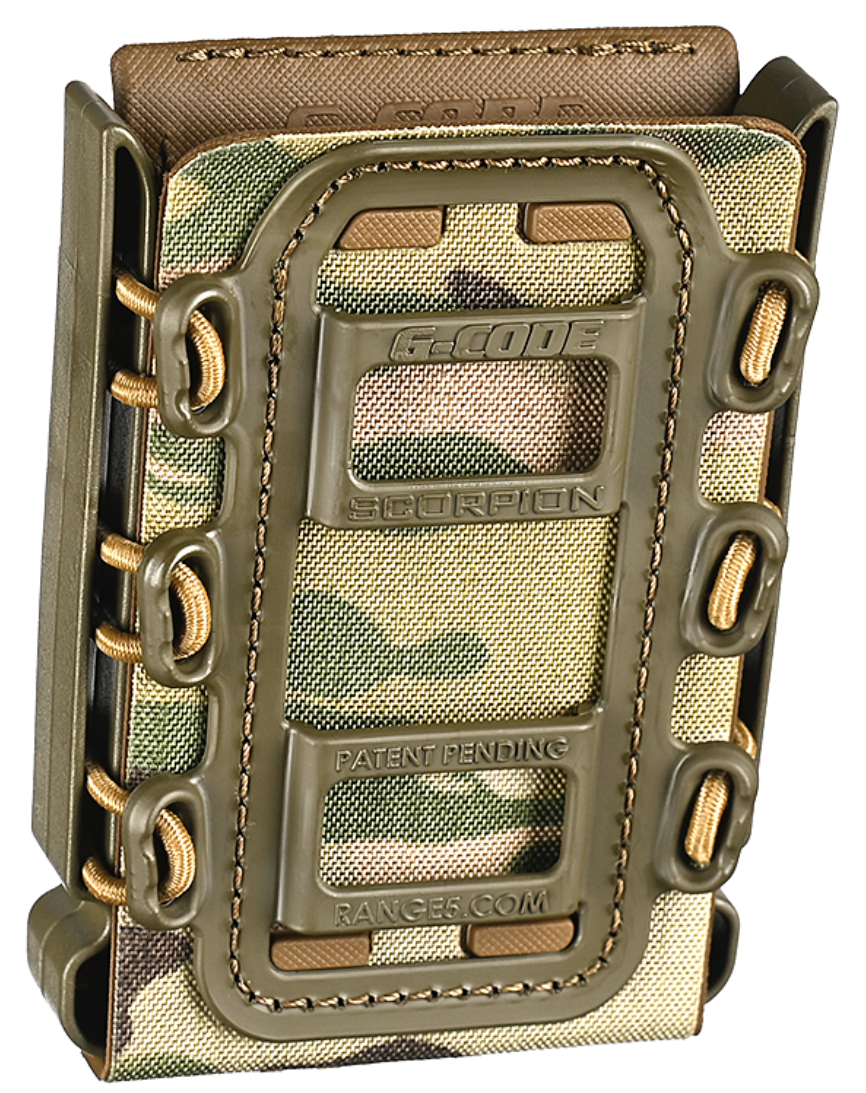
Next up on my belt I have a rifle magazine pouch with a low ride retention setup allowing for a lot of surface area to grip while whipping it out. There are many opinions on how and when to use a rifle magazine from your battle belt. However, the importance of having extra ammunition for your primary weapon (your rifle) is essential and should be located on your belt setup. Hey, if you can fit it, add two magazines!
6. Pistol Magazine Pouch - $58.50
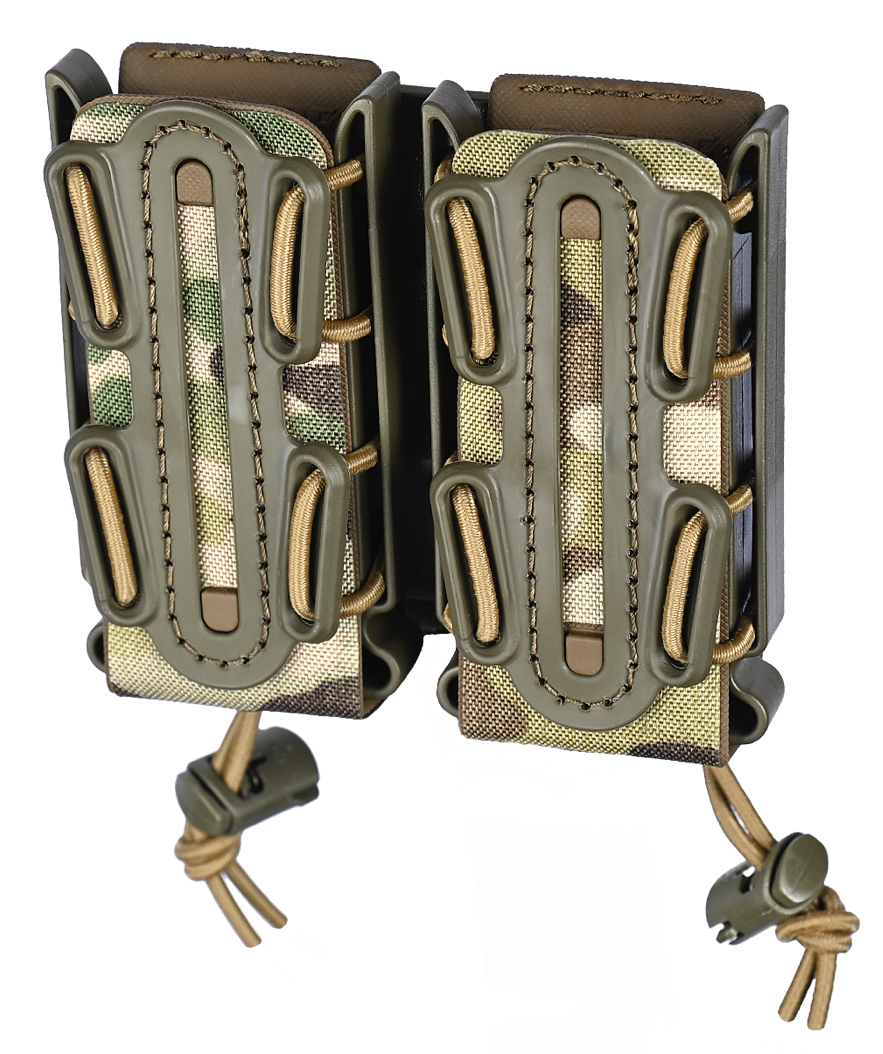
The rifle mag pouch is followed by a pistol double magazine carrier. Obviously we need to be able to feed our secondary weapon—our trusty sidearm. Just like the gunslingers in the Wild West had ammunition on their battle belts, we need ammunition on ours.
7. Benchmade SOCP - $104
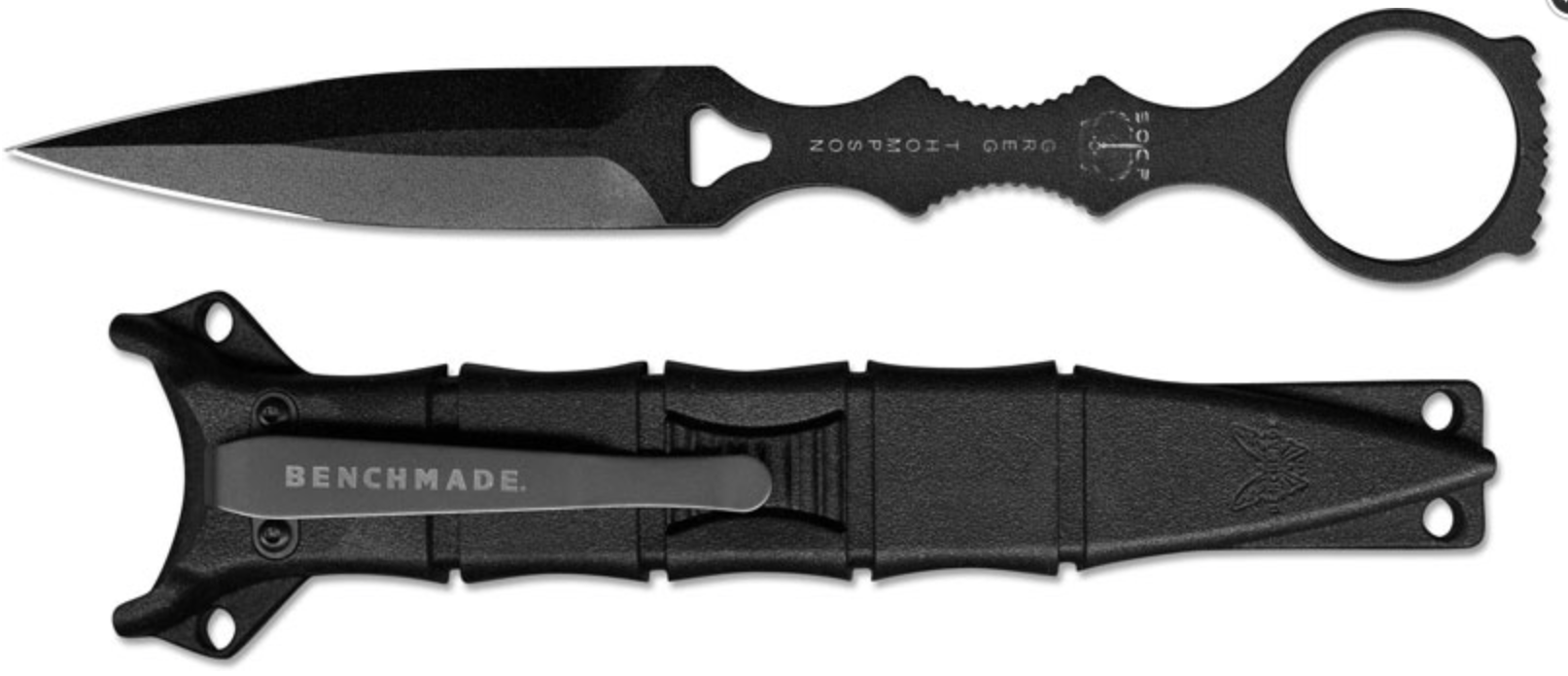
Finally, next to my cobra buckle sits my blade. A knife is a weapon and a tool. It is essential to any battle belt setup. There are so many reliable options out there, but my favorite is the SOCP by Benchmade. If you think it may be too large for your setup they also offer a mini version.
In conclusion, on my belt sits 45 rounds of 9mm (including my loaded pistol), 30 rounds of 5.56mm, a knife, one angry flashlight, and just enough medical to survive 50% of wounds (I think). So, as you can see, making holes and patching them is the name of game here, folks.
At other times in life, my belt carried glow sticks and a sweet little bungee lead for hooking into aircraft so no oopsies occurred such as falling from a helicopter. This leads me to my last point. Setup your battle belt to fit your specific needs. I’ve covered some of the essentials, but everyone’s belt will look different.
The really cool thing about battle belts is that they aren’t just for military personnel. Civilians can and should run them as well. As an American citizen you are more likely to administer medical aid and patch a hole, rather than make one. At the very least treat your belt as a fundamental piece of range gear (for any range not entirely run by fuds that allow some form of actual training).
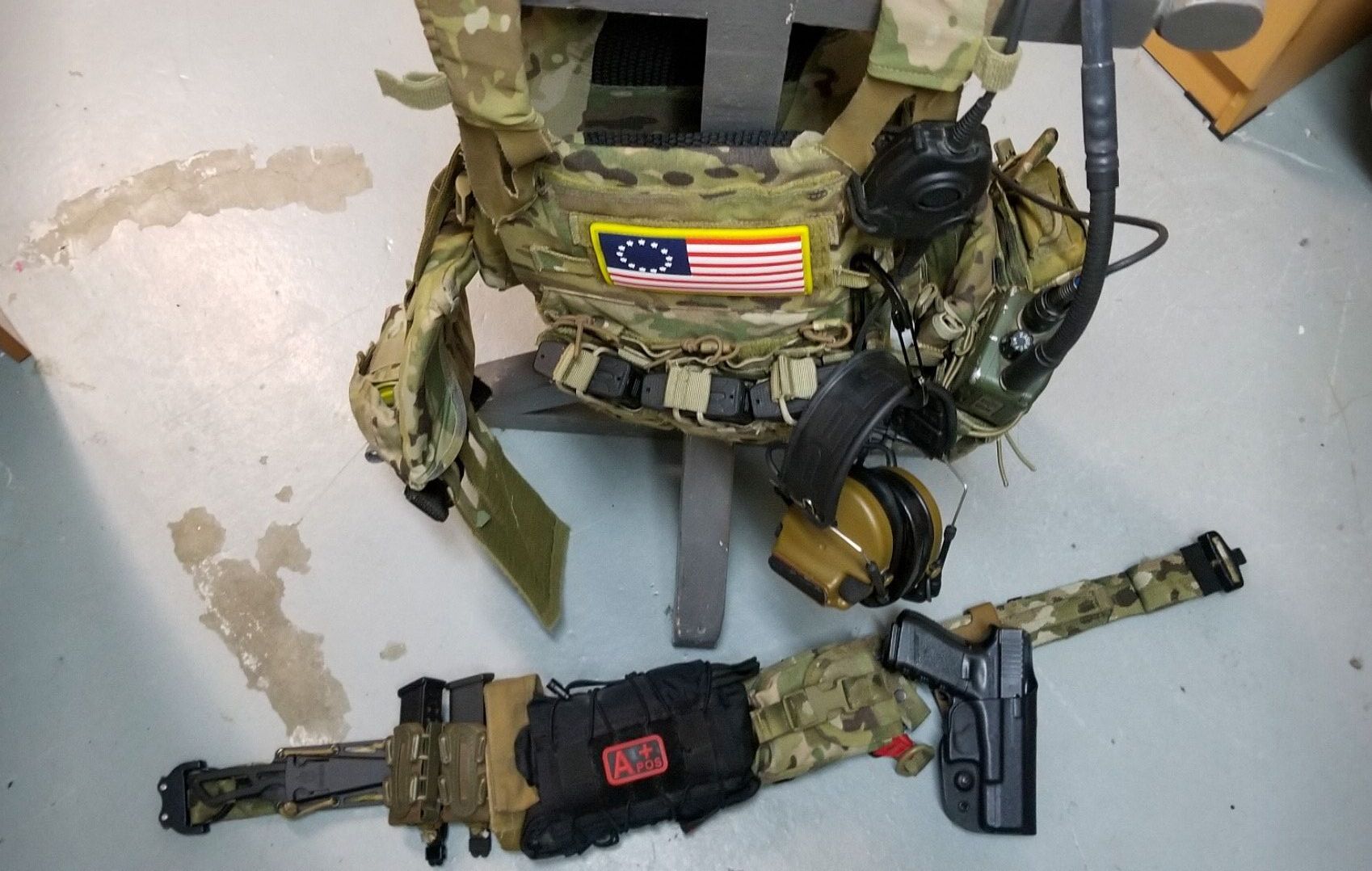
Conclusion
We always advocate on the PathFivePodcast: as long as you can afford it and you’re not getting it just to look cool, training with a properly setup battle belt can really raise a person’s readiness. In an age where police departments wait an hour to enter a school to neutralize an active shooter, despite alllllllll the doctrine that dictates otherwise, those of us who make it a point to own this kind of gear and keep it reachable are being constantly validated. Like a fine red wine and some meat bolognese sauce, be sure to pair your belt setup with a well-rigged plate carrier then go train with it!
As states like New York ban your ability to own body armor and maintain independent readiness, time is of the essence. Be a warrior in a garden, not a gardener in a war zone. There are many right ways to rig up a belt, and as long as it expands your capability without degrading it by slowing you down, or snagging you on everything like a 4 year old out fishing for their first time, you may be on the right track.
“The art of war teaches us to rely not on the likelihood of the enemy's not coming, but on our own readiness to receive him; not on the chance of his not attacking, but rather on the fact that we have made our position unassailable”. -Sun Tzu
Written by Midas, founder of PathFive. PathFive is a team of US military veterans and security specialists with experience ranging from corporate penetration testing to logistics management to special operations and product development. As a team, they disseminate their experience via their podcast and social media presence to provide analysis on gear, tactics and geopolitical events to raise readiness and awareness for the critical thinking individual. Follow them on Instagram at @path_five and check out the PathFivePodcast on all major platforms.
See Our All-Natural Pomades
Lox & Company, LTD. is a veteran-owned-and-operated company that specializes in all-natural grooming products and patriotic apparel. We take Bill of Rights seriously when it says that American citizens have the right to bear arms, and that this right shall NOT BE INFRINGED. That's why we do what we can to promote true patriotism while help you look and feel your best, whatever your style.
Check out our all-natural pomades today and see for yourself what sets our products apart from the chemical-laced alternatives. And remember — Stay Sharp. Stay Savage.®

